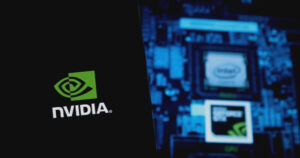Unlocking the Future of AI Training: The Impact of Floating-Point 8 (FP8)
By Felix Pinkston
Published on June 4, 2025
In the ever-evolving landscape of artificial intelligence (AI), the efficiency of model training has become a critical factor as large language models (LLMs) expand in complexity. Enter Floating-Point 8 (FP8) – a game-changing advancement that promises to revolutionize AI training. As detailed by insights from NVIDIA, FP8 strikes a perfect balance between computational speed and accuracy. At Extreme Investor Network, we believe this innovation will not only accelerate developments in AI but also transform industries reliant on these technologies.

What is FP8 and Why Does It Matter?
FP8 is tailored to optimize both speed and memory usage during AI model training. By leveraging two specialized formats, E4M3 and E5M2, FP8 meets the demands of deep learning workflows. E4M3 focuses on ensuring precision during forward passes, while E5M2 offers a greater dynamic range essential for backward passes. This dual approach not only enhances computational efficiency but also ensures that accuracy remains intact.
NVIDIA’s H100 architecture is integral to the adoption of FP8, as it incorporates FP8 Tensor Cores, which uniquely enable accelerated training processes through lower precision formats. This innovation fosters rapid advancements in AI capabilities, making FP8 a focal point for developers and organizations alike.
FP8 vs. INT8: A Comparative Advantage
While INT8 formats have their benefits—primarily in memory savings—they operate as fixed-point formats that struggle to accommodate the dynamic ranges typical in modern transformer architectures. This often results in quantization noise, complicating model training. On the other hand, FP8 offers a floating-point design that allows for individual scaling, which means a wider range of values can be supported, significantly reducing errors during operations like gradient propagation.
Exploring NVIDIA’s Blackwell Architecture
Following the introduction of FP8, NVIDIA’s Blackwell GPU architecture further enhances the capabilities of low-precision formats. It includes finer-grained sub-FP8 formats such as FP4 and FP6, which utilize a unique block-level scaling strategy. By assigning distinct scaling factors to smaller blocks of tensors, the Blackwell architecture enhances precision without adding complexity, making it easier to manage and implement.
Speed Ups and Convergence: Finding the Right Balance
The FP8 quantization processes are designed to fast-track both LLM training and inference by minimizing the bits required for tensor representation. This translates into substantial savings across compute, memory, and bandwidth. However, it is essential to maintain a careful balance; excessive reduction in bit count can lead to poor convergence and ultimately affect the training outcomes negatively.
Effective Implementation of FP8
For organizations eager to adopt FP8 into their training regimens, several strategies stand out. Tensor scaling and block scaling are two effective approaches. Tensor scaling applies a uniform scaling factor across all data points, while block scaling allows for tailored adjustments within smaller blocks. Utilizing these strategies can significantly optimize both model performance and accuracy, driving more successful outcomes.
The Road Ahead: FP8 in the AI Landscape
In conclusion, Floating-Point 8 represents a remarkable leap forward in AI training methodologies. Its ability to balance computational demands with precision sets the stage for the next wave of innovations in artificial intelligence. As we at Extreme Investor Network continue to monitor advancements in this field, it is clear that FP8 will play a crucial role in shaping the future of technology.
For continuous updates and insights into groundbreaking technologies, make sure to stay tuned to Extreme Investor Network.
For in-depth information, check out the original NVIDIA blog post.
Image source: Shutterstock

